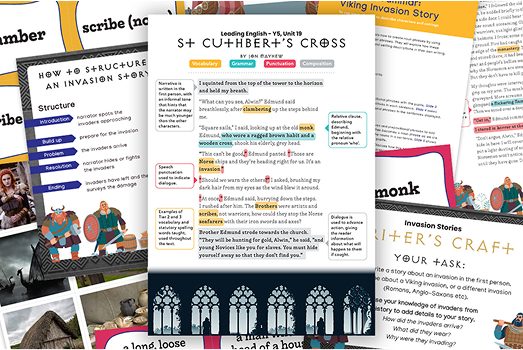In primary English, it’s easy to mistake busy work for deep learning. Pupils write stories, reports, poems, arguments. Classrooms sound purposeful. Books look full.
But when subject leaders look closer, gaps appear.
Pupils forget what they’ve been taught. Knowledge doesn’t transfer. Structure falls apart. Vocabulary is narrow or misused. Despite a packed curriculum, progress isn’t always consistent.
One common cause? Lack of clarity about what each lesson is really for.
When lessons are task-driven rather than learning-driven, teachers and pupils focus on output – not understanding. Without understanding, retention and reliable assessment suffer.
I remember, as an NQT, being frustrated by my deputy’s obsession with learning objectives. It felt like a chore. But then I realised: in English lessons, so much happens at once – grammar, transcription, vocabulary, creativity – that a clear focus is essential.
Learning objectives aren't just board prompts. They're the compass for teaching and the anchor for learning.
How Leading English supports effective learning objectives
Our units are built around high-quality model texts, specific skills and incremental objectives. For this to translate into impact, teachers must know exactly what pupils should learn.
That shared clarity sharpens teaching, focuses pupils and improves assessment.
What makes a strong objective?
It’s not a title or task description. It’s a clear statement of the knowledge, skill or understanding pupils will secure. It tells teachers what to model, pupils what to focus on, and leaders what to monitor.
For example:
Weak: To write a setting description
Strong: To use expanded noun phrases to build imagery in a setting description to create tension
The stronger objective clarifies purpose, aligns teaching and assessment and makes learning visible.
Why do learning objectives matter?
Cognitive science shows:
Learning is about encoding, practising, retrieving and connecting knowledge over time. Vague objectives make focus and retention hard.
Writing demands coordinating multiple processes. Without clear objectives, cognitive load increases and progress slows.
Retrieval and interleaving depend on clear anchor points. Without focus, reviewing is less effective.
When everyone understands the learning goal, teaching sharpens, learning deepens and assessment becomes purposeful.
What can subject leaders do?
This isn’t about creating more work. It’s about increasing focus and reducing ambiguity. Try these five actions:
Audit learning objectives – focus on learning, not just doing
Ask teachers to review recent objectives. Are they clear about what pupils will learn rather than just the tasks they’ll complete? Can the success criteria be clearly drawn from the objective? Are objectives tightly linked to the medium-term plan?
Ask “What will pupils learn?” in planning
Encourage teams to use this question to sharpen focus on the specific knowledge or skills gained, ensuring lessons align with curriculum goals and set up effective assessment for learning.
Break learning into manageable steps
Help staff spot when objectives cover too much. Teaching smaller, well-sequenced chunks enables clearer modelling, better support and deeper pupil understanding.
Embed retrieval and feedback routines
Use starters and questioning to revisit past learning regularly. This strengthens retention and makes assessment more effective.
Align assessment with the objective
Clear objectives allow teacher feedback, peer marking and self-assessment to target the same learning goals, building consistency and pupil ownership.
Precise objectives improve coherence, teaching precision, pupil focus and assessment accuracy. That’s strong subject leadership. Leading English provides tools to support this – from model texts and progressive objectives to implementation guidance and assessment tools.





